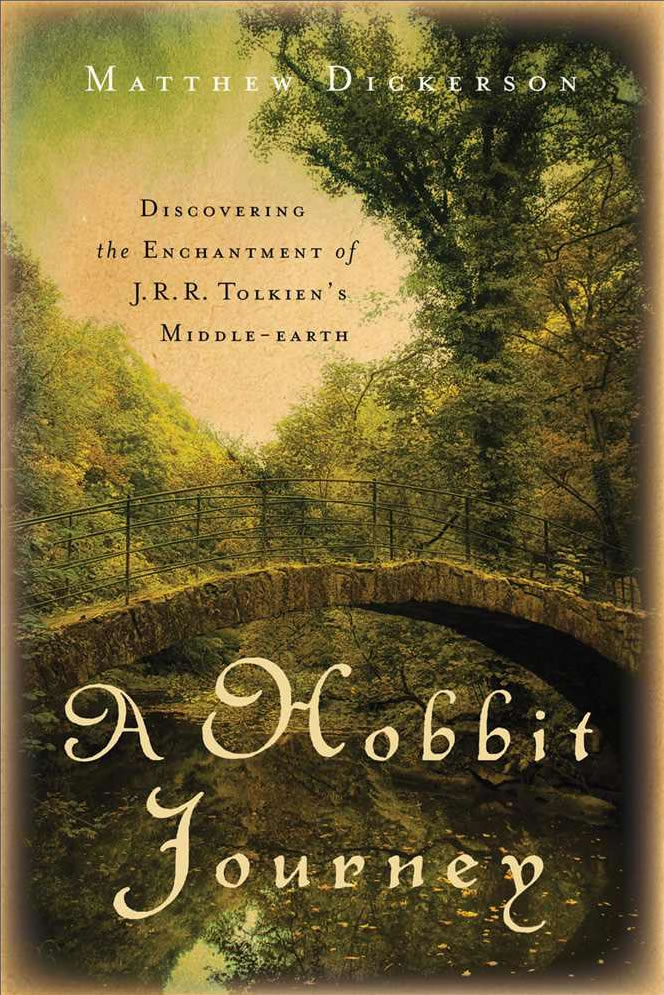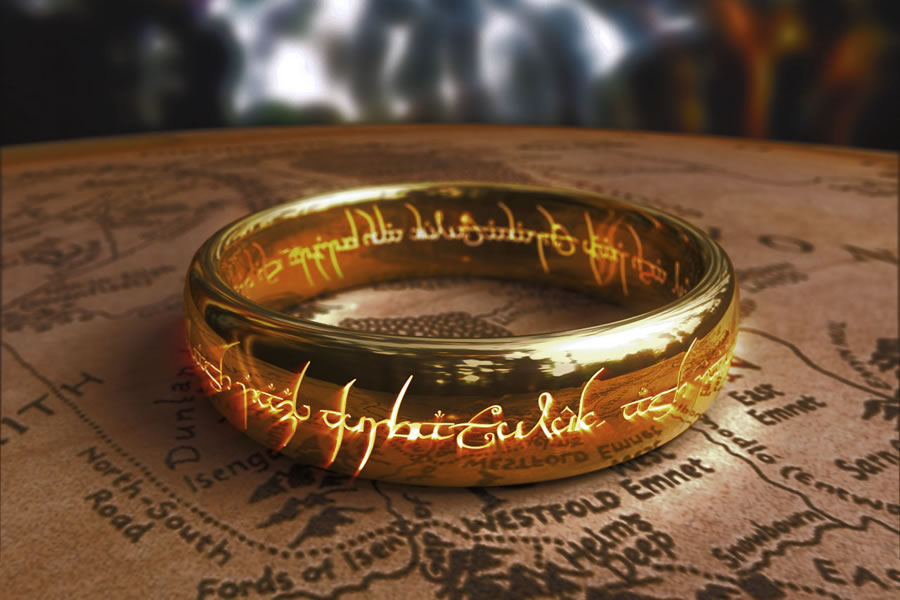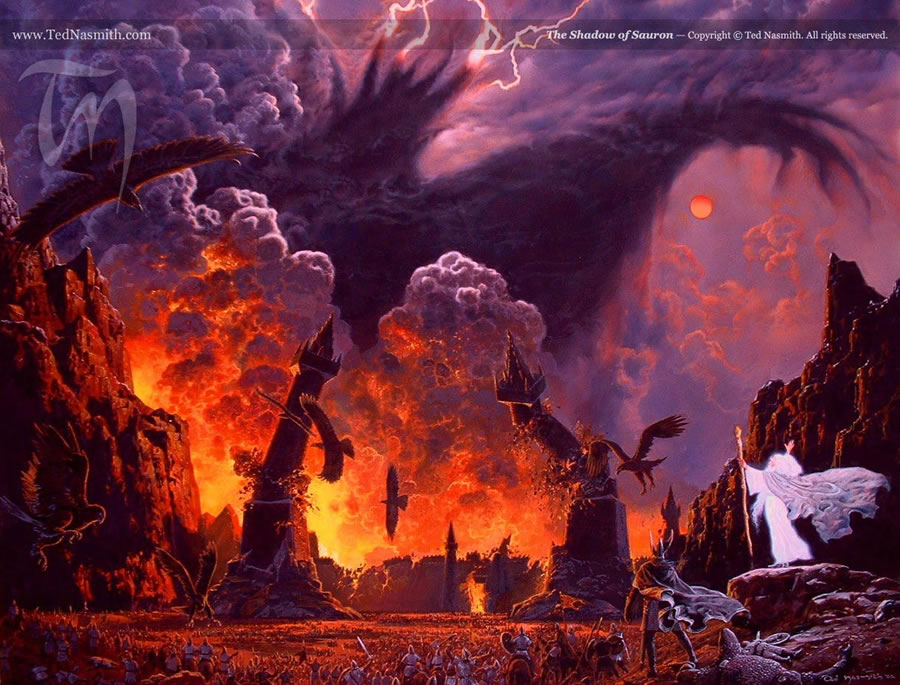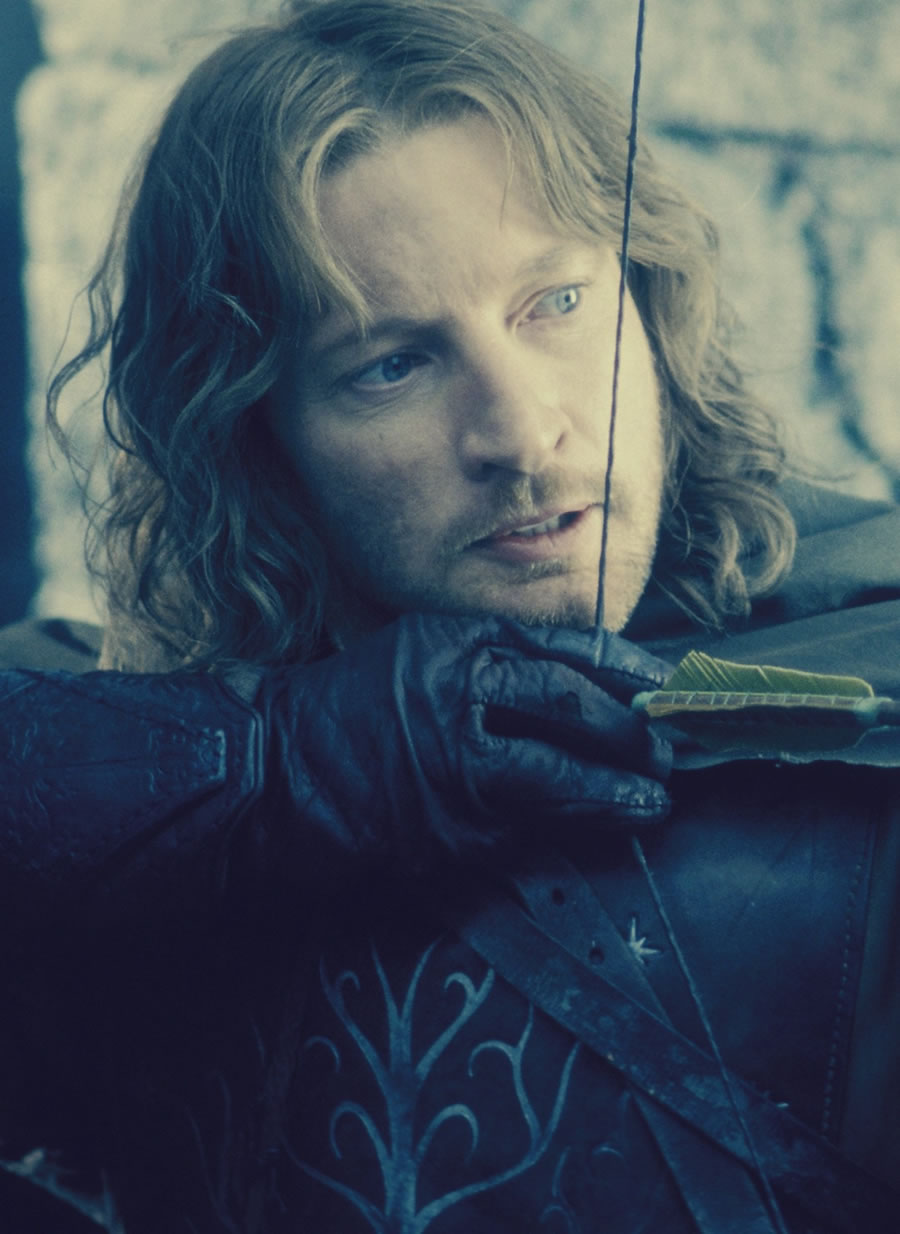Interview with Matthew Dickerson, author of A Hobbit Journey: Discovering the Enchantment of J. R. R. tolkien's Middle-Earth (18.01.13 by Pieter Collier) -
Comments
In his engaging and thought-provoking book, A Hobbit Journey: Discovering the Enchantment of J. R. R. tolkien's Middle-Earth, Tolkien expert Matthew Dickerson shows how a Christian worldview and themes undergird tolkien's Middle-earth writings and how they are fundamentally important to understanding his vision.
His revised and expanded edition of Following Gandalf includes new material on torture, social justice, and the importance of the body.
I heard so many good words about this books and reviews were very good as well (and because I believe I never found any author linking torture in our time with the works of Tolkien) I contacted Matthew Dickerson who accepted to be interviewed. I'm very happy and proud to publish it here today and hope it gives you as much joy as it did me.
TL: Dear Matthew Dickerson, can you tell us a little about yourself?
MD: I am a husband and father of three sons. In 2013 I will celebrate my 25th anniversary, and my oldest son graduates from college. I love the outdoors, especially trout fishing in rivers. I also enjoy canoeing, wilderness camping, cross-country skiing, snowshoeing, and biking. And music has also been very important to me for as long as I can remember. I've been a bassist and songwriter in a blues band that got some national airplay, and now I play guitar, bass, and harmonica in an Americana band called Zephyr, for which I also do much of the songwriting. My favorite recording and performing singer-songwriters include Pierce Pettis, Buddy and Julie Miller, Over the Rhine, Phil Keaggy, and the late Mark Heard.
TL: What did you like to read when you were a child? What were the books that inspired you?
MD: Well if by child you mean under ten years old, I couldn't tell you. I knew books were important to my family and my parents read to us a lot. But the earliest books I remember were C.S.Lewis' Chronicles of Narnia and Llloyd Alexander's Chronicles of Prydein. Those would have been from around fifth and sixth grade when I read them, and I still return to them from time to time. Through my teen years I also read Ursula Leguin's Earthsea Trilogy and Patricia McKillip's Riddle-Master of Hed books. I loved Walt Wangerin's The Book of the Dun Cow, and I devoured all of Madeleine L'Engle's young adult fiction and Calvin Miller's trilogy of The Singer, The Song, and The Finale. I think I read some Hardy Boys books, but I don't remember any details from them and I couldn't tell you much about them. The first mysteries I remember reading and enjoying were the Dorothy Sayers' Lord Peter Wimsey books.
My father ran a bookstore in Harvard Square so I did a lot of reading. I'd often to work with him and bring a book home.
TL: When did you read The Hobbit / The Lord of the Rings for the first time and do you still recall this moment?
MD: I had a middle-school teacher in 7th or 8th grade who started reading The Hobbit aloud in class. I instantly fell in love with it, and couldn't wait for her to finish at the slow read-aloud pace, so I got a copy and started reading ahead. I think I finished it in one or two days.
MD: I didn't allow my kids to read Tolkien until they were at least ten years old. Then when each of my three sons turned ten I read The Hobbit aloud with him (usually just the two of us). When I was done, he had to read it to himself. Then I read The Lord of the Rings aloud. Then he would read that it to himself. And finally when he was done with that, I read The Silmarillion aloud. As I said, I did that with each of them, one at a time. (They are separated by three years and four years respectively). It worked well, and was a special time. Well worth the investment of hours. Great literature. I think and hoped it has helped shaped them as young men.
TL: I'd like to talk about your book, A Hobbit Journey: Discovering the Enchantment of J. R. R. tolkien's Middle-earth What prompted you to write the book?
MD: The simple answer is that I thought (perhaps foolishly) that :
1. I had some things to say that nobody else had said in just that way, and 2. I could say them well. I had studied Tolkien as a scholar, and taught courses on his literature for years, but could also write at a very readable and accessible way that was not too academic or dry or esoteric. I wanted to write a book that would be insightful, but also enjoyable to read for the common Tolkien fan. And most especially, I wanted to write in a way that honored the source material. That is I did not want to force tolkien's work into supporting some philosophy of mine, but instead tried to get at some of the most important metaphysical ideas in his writing.
Tom Shippey is right that there are certain metaphysical ideas in tolkien's work that are really at the core of it all. When you start getting at those, it sheds light on everything he does. Or maybe it's better to say this the other way around: when you start asking questions, and pushing into a deeper understanding, I think if you are honest and careful in the reading you start to get at those ideas and making all sorts of connections. I wanted to help elucidate those and find the connections.
TL: There are many books written with a "Hobbit" connection these days, but not many get such nice reviews, what makes your book different?
MD: I think I have written in an engaging way. I think I've asked good questions. And I think there is a nice narrative arc to my book. Each time I answer one question it leads to more questions, and eventually I think it ties together nicely. I think the book does lead to a deeper understanding of Tolkien, but also explores ideas that are important in life. Of course I'm sure all authors think their books are good. I'm sure there are flaws in my writing also. And I do think there are some other very good Tolkien books as well, though also some I found less interesting or less well-written.
I guess if I had to boil it all down, I think maybe the key aspect of my book that makes it successful is that it does provide what you might call "scholarly insights" into tolkien's writing that an average reading might now see or be aware of, but the book doesn't feel too academic. It is readable.
MD: This really came out of two things at once. First I was very disturbed by the treatment of prisoners at Guantanamo Bay, and the practice of torture. Second I continue to be appreciative of how tolkien's books speak to—or be relevant to—the most important issues of our day, and of what it means to be human. They speak to issues both timeless and current. But not in a preachy way. One day these two threads were swirling around in my mind and got tangled, and I started thinking about how Tolkien dealt with the treatment of prisoners in his writings, and in particular with torture. As I went through example after example, a clear picture emerged: torture was portrayed as wrong, in tolkien's world; it was associated with Morgoth, Mordor, Sauron, and the fallen Saruman. Even the torture of prisoners to gain information was viewed as wrong.
And that related to a deeper issue. Why is it that it would be wrong to use the One Ring to defeat Sauron. So then I went beyond his published fiction and did some research at the Tolkien collection at the library at Marquette (where many of his original manuscripts and letters are housed). And I found some more material that explicitly supported this.
TL: Your book is called A Hobbit Journey, but is discusses more then just The Hobbit. Where does tolkien's The Hobbit connect with the other books?
MD: The Hobbit is in some ways the entry point into the world of Middle-earth for modern readers largely because of the nature of hobbits themselves, who provide the best lens for us. Although The Silmarillion is an older and in some ways deeper work than The Hobbit or even The Lord of the Rings -- begun some twenty years before Tolkien began The Hobbit -- it is also less accessible for most people. It is very beautiful and profound, but not easy to read. You will also note it has no hobbits. When Tolkien first introduced hobbits to his world of Middle-earth, it was an accident. The book The Hobbit was not part of Middle-earth when he started writing it. He just sort of stumbled into the world of Middle-earth (which he had been writing about for years) as the story progressed. But that wonderful accident brought the very modern English characters — hobbits —into his heroic world. It is through the eyes of hobbits that we can see more clearly I think, because we can relate to them more than we can relate to elves like Elrond or even ancient heroes like Beorn or Beren. So the stories told from the viewpoints of hobbits are more down-to-earth, light-hearted, and accessible to most modern readers because hobbits really are modern people—that is, late 19th century common Englishmen. But all the works together form a very cohesive whole, ranging from the lighthearted fairy-tale to the heroic epic fantasy to the cosmogonic and mythic.
TL: Are you not afraid that people will see The Hobbit as a children book and finding discussing tolkien's books a bit over the top?
MD: Certainly some people see The Hobbit as a children’s book. And to some degree they are right, I suppose. At least it started out that way, and is more accessible to a younger audience than his other works. But I'm not afraid of what you mention simply because that type of person who would not be interested in my book is not likely to pick it up in the first place. The sort of person who would pick up my book is the person who recognizes something of the depth of Tolkien’s writing, and has a desire to understand it. That person, I think, will find something worthwhile in reading my book.
TL: How do tolkien's book connect with the movie adaptations by Tolkien? Where are the movies good and where do they go wrong?
MD: That is a huge question. And my answers will annoy or even infuriate some folks, especially the avid fans of the movies who maybe are less familiar with Tolkien and his works. So let me make it clear that I am not critiquing the films as films. I am only answering the much narrower question of how well they represent Tolkien and his ideas.
I think there are some characterizations that were very well done in the films. I think Boromir, Eowyn, Éomer, and Saruman were all portrayed especially well in The Lord of the Rings films. Sam and Gollum and for the most part Gandalf were also well done. And the young Bilbo was wonderfully portrayed in The Hobbit. I think the Shire was beautifully done. And I liked the visual scenes of Rivendell, and also of Orthanc, and several other places as well.
I was also not fundamentally bothered by the addition of certain scenes, or by the omission or changing of some scenes. Film is a different art than literature, and I understand that some things that work well in a book don’t work well in a film. I do wish that in The Hobbit: An Unexpected Journey, Jackson had left out all the almost slapstick chase and escape scenes. I thought they were a bit silly and over the top, and I’d rather have seen more of the quiet but enjoyable dialogue, and more of Rivendell, and more of the dynamics among the company as they traveled.
The second and related criticism is that Jackson repeated removes the free will choices of the heroes, and has them instead almost accidentally helping. In the book, for example, Merry and Pippin choose to go with Frodo at great risk and self-sacrifice, knowing he is in trouble. In the film they are stealing vegetables and almost accidentally fall in with him. In the book Faramir chooses to help Frodo. In the film he tries to bring Frodo back to Minas Tirith and seems to let him go out of fear. Similar points could be made about Théoden and Treebeard. It’s as though Jackson doesn’t believe in free will and the sort of heroism that comes from making good choices—the sort of heroism that is at the core of Tolkien’s work. So Jackson makes sort of accidental heroes.
TL: What sources did you use to write your book?
MD: I read some of the works of other Tolkien scholars. Though there is so much of that out there that I was quite choosy about what I bothered with. I also read a lot of Tolkien’s letters an posthumously published works. And I spent some time looking at unpublished earlier drafts of his writing. I made a couple very fruitful trips to the Raynor Memorial Library at Marquette University that houses the wonderful Tolkien collection.
TL: What special qualifications do you have for making this study? What makes you different from your colleagues?
MD: I don’t claim any particular qualifications, or anything that makes me “different”--if by different you mean “more qualified”. There are plenty of good scholars and good writers working on Tolkien. And some who are both good scholars and good writers. There are certainly some scholars who know more about Tolkien than I do. I just sought to think carefully, write carefully, ask good questions, pay attention, learn from others, and above all to try to be true to Tolkien’s works. I think I have a very good understanding of Tolkien’s works, and really that’s what I care about.
TL: How does this book compare to your previous book Following Gandalf: Epic Battles and Moral Victory?
MD: It’s really a new and revised edition. I added two completely new chapters. One is the Introduction exploring Tolkien’s own view of fantasy and meaning, and how he viewed his world of Middle-earth and its relevance to our world. The second is the chapter you already alluded to on torture and the treatment of prisoners.
I also fixed a few of what I considered to be the weaknesses of the earlier work, and I polished the writing further, and I added some new material that was due to new scholarship – both new insights from other scholars, new insights of my own, and even new insights that might have come from a couple new posthumous publications of Tolkien.
It’s a better book, but not dramatically different. If you have A Hobbit Journey, I wouldn’t bother getting Following Gandalf –unless you can find it for $2 or $3. It does have one chapter on hope that is not in the new book. On the other hand, if you have (and liked) Following Gandalf, I would recommend the new book as it does add something worthwhile.
TL: Do you see your book as a philosophical work or a literary study?
MD: Yes. Both. Keep in mind that much of traditional philosophy is literature. A philosopher studying Plato might write about some of Plato’s dialogues and the ideas I them. The dialogues are literature. So there isn’t really a difference there between studying literature and studying philosophy. You could probably make the same argument about Des Cartes or Kierkegaard. Or the bible, for that matter. Modern academia and its hyper-specialization requires these categories. It seems less important to real life.
TL: You seem to have studied the power of creation and religion in tolkien's works. Is this an important aspect for you?
MD: I think I’d use the terms theology, metaphysics, spirituality, and philosophy rather than religion. But I’m certainly interested in what (and how) Tolkien’s works reveal about the big questions of life. And those big questions do often have deep metaphysical and spiritual significance.
I’m also interested in creativity, and the power of creativity. I think creativity and metaphysics tie together in Tolkien’s works in many ways, not the least of which is his answer to the question of why we are creative: we are creative because we are created in the image of a creator. We are made creatures, and not just made, but made like a maker.
MD: I hope they find my book enjoyable and insightful. I hope that it stimulates them to return to Tolkien’s works with new eyes and also new appreciation. But mostly just that it encourages readers to go back to Tolkien.
And maybe I would add one thing to that. I think that Tolkien’s works speak so powerfully and beautifully because they are rooted in something deep and true. So I would also hope that readers of my book who love Tolkien’s works would come to understand not only those underlying truths, but would see that the very thing that makes Tolkien’s works so good and true is their rootedness in those truths. I’d want readers drawn to those truths.
TL: When working on the research, did you discover new things about Tolkien? Something unexpected?
MD: I am always learning new things, but most often the new things end up related to what I’ve already learned. I was delighted to discover the little passage in which Tolkien addresses the torture of orcs. And I think I hadn’t realized, until writing my last two books on Tolkien, just how closely Tolkien associated Middle-earth with our world.
TL: It seems like a lot of big names aided or at least inspired you, who did you work with closely to get this book done?
MD: I’ve learned quite a bit over the years from Tom Shippey, from reading his books and essays, and from listening to him speak and talking with him in person, and also from sharing my drafts with him and getting his feedback. I consider him the pre-eminent Tolkien scholar. I certainly benefited a great deal from my interactions with Jonathan Evans at the University of Georgia, and with David O’Hara at Augustana College (through years of conversations and also through writing books with each of them). I have a couple colleagues at Middlebury College I have had great conversations with: John Elder, Kathy Skubikowski, and Dan Brayton. I also benefit from some regular interaction Colin Duriez.
As for a more local and formal “Tolkien community”, for the past decade Tolkien scholar Chris Vaccaro has hosted a wonderful Tolkien conference at the University of Vermont just up the road from me. I’ve enjoyed that event and learned from various contributors and especially from invited speakers such as Michael Drout and Douglas Anderson. I don’t know either of them especially well personally, but I have had a few very enjoyable interactions with both of them and they have certainly contributed tremendously to the field.
TL: Just out of curiosity, do you have any Tolkien books in your house and what is your most precious one.
MD: I have one bookshelf full of Tolkien and C.S.Lewis scholarship. My autographed copy of Author of the Century is my most treasured book on that shelf. I have some nice coffee table editions of maps and art work. I have saved the Hildebrandt brothers calendars from the early 1970s. They decorated my walls at college in the early 1980s, and at times have decorated my office. One of my sons has them hanging now. And I have a first edition, first U.S. printing hardcover of The Silmarillion and an out-of-print hardcover edition of Tree and Leaf. Both of these are well-read and well-loved.
Author: Matthew Dickerson
Publisher: Brazos Press, Div of Baker Publishing Group
Publication Date: 1 Oct 2012
Type: paperback, 260 pages
ISBN-10: 1587433001
ISBN-13: 978-1587433009
Spread the news about this J.R.R. Tolkien article:




